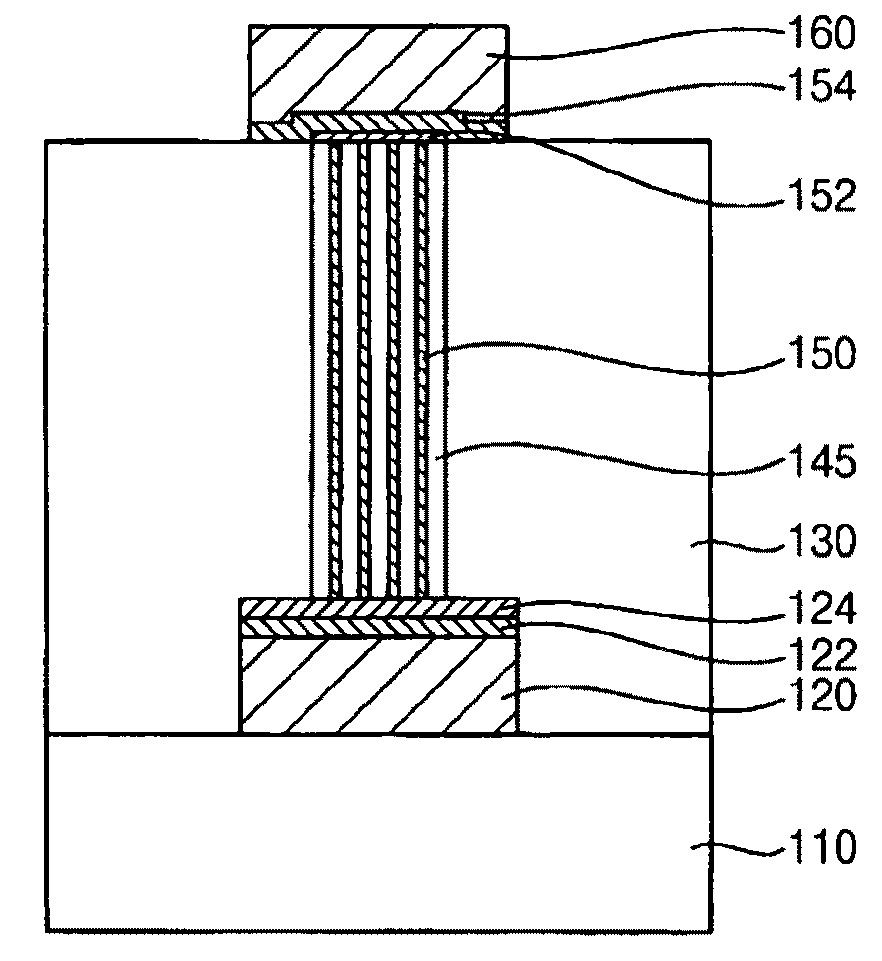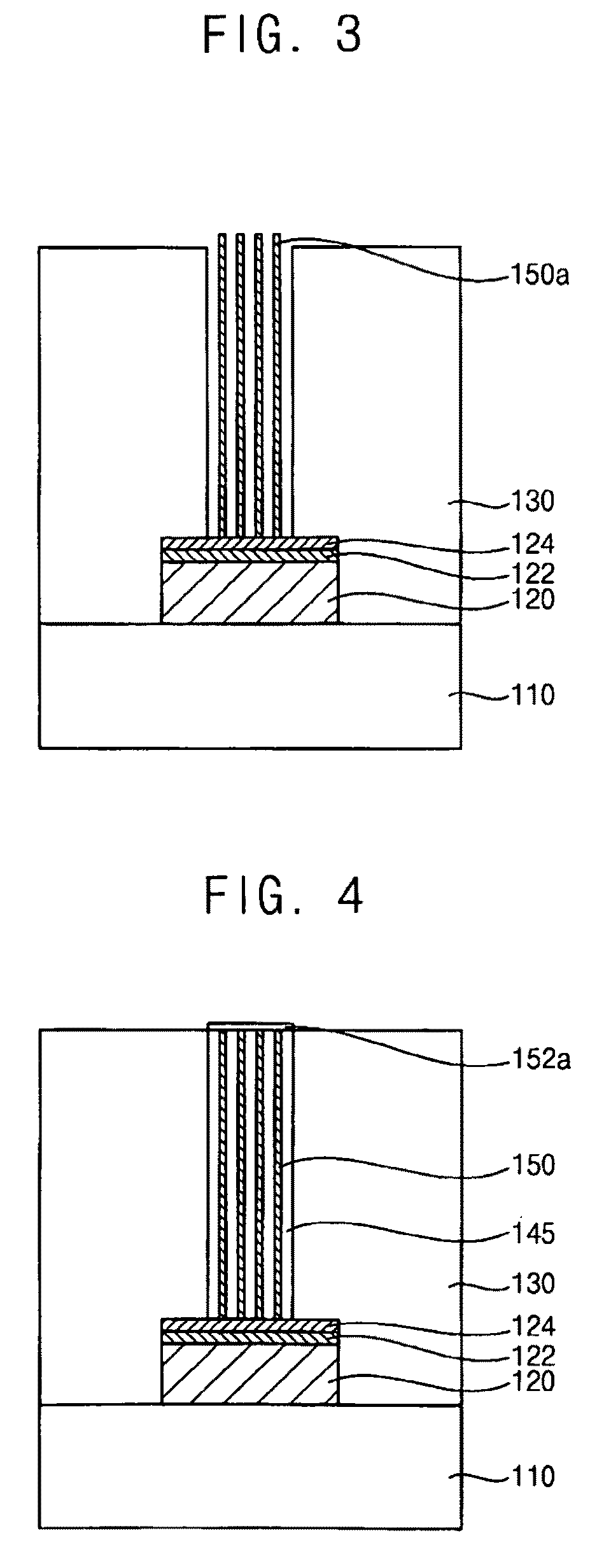Method of forming a wiring having carbon nanotube
a carbon nanotube and wiring technology, applied in nanostructure manufacturing, conductive pattern formation, printed circuit manufacturing, etc., can solve the problems of increasing the likelihood of cutting in the metal wiring, affecting the conductive pattern formation process, etc., to achieve the effect of reducing the electrical contact resistance between the carbon nanotube wiring and the upper wiring, reducing the electrical resistance of the wiring, and increasing the adhesiveness between the carbon nanotube wiring and the contact metal layer
- Summary
- Abstract
- Description
- Claims
- Application Information
AI Technical Summary
Benefits of technology
Problems solved by technology
Method used
Image
Examples
embodiment 1
[0037]FIG. 1 is a cross-sectional view illustrating a wiring including a carbon nanotube wiring according to some example embodiments.
[0038]Referring to FIG. 1, a semiconductor device may include a substrate 110, a lower wiring 120 provided on the substrate 110, a first contact metal layer 122, a catalyst layer 124, an insulating interlayer pattern 130, a capping layer pattern 145, a carbon nanotube wiring 150, a native oxide layer 152 being dielectrically broken down, a second contact metal layer 154 and a upper wiring 160.
[0039]The substrate 110 may include a silicon substrate, a silicon germanium substrate, an epitaxial substrate, etc. Several conductive structures may be formed on the substrate 110. Examples of the conductive structures may include a transistor (not illustrated), a capacitor (not illustrated), a contact pad (not illustrated) of the capacitor, which is electrically connected to a first contact region of the transistor, a bit line (not illustrated) electrically co...
embodiment 2
[0067]FIG. 7 is a cross-sectional view illustrating a wiring including a carbon nanotube wiring according to other example embodiments.
[0068]Referring to FIG. 7, a semiconductor device may include a substrate 210, a lower wiring 220 provided on the substrate 210, a first contact metal layer 222, a catalyst layer 224, an insulating interlayer pattern 230, a capping layer pattern 245, a carbon nanotube wiring 250, a second contact metal layer 254 and a upper wiring 260. Description of the first contact metal layer 222, the catalyst layer 224, the insulating interlayer pattern 230, the carbon nanotube wiring 250 and the upper wiring 260 may be the same as that of corresponding elements in Embodiment 1, so description of these elements will not be repeated.
[0069]The capping layer pattern 245 may be formed on the catalyst layer 224 to fill the opening in which the carbon nanotube wiring 250 may be formed. An upper face of the capping layer pattern 245 may be disposed lower than an upper ...
embodiment 3
[0083]FIG. 10 is a cross-sectional view illustrating a decoupling capacitor in a logic device according to another example embodiment.
[0084]Referring to FIG. 10, a decoupling capacitor may include a substrate 300, a ground line 305, a first contact pad 310, a first insulating interlayer 320, a first contact plug 330, a second contact pad 340, a second insulating interlayer 350, a second contact plug 360, a lower electrode 370, a dielectric layer 380, an upper electrode 390 and a protective layer 395.
[0085]The ground line 305 may be provided on the substrate 300. The ground line may be a wiring including carbon nanotube, conductive polysilicon or a metal. The first contact pad 310 may be provided on the substrate. The first contact pad 310 is a first metal wiring and is connected to the ground line 305 or a power line (not illustrated). The first contact pad may include a catalyst layer (not illustrated) and a contact metal layer (not illustrated). The first insulating interlayer 320...
PUM
| Property | Measurement | Unit |
|---|---|---|
| current | aaaaa | aaaaa |
| temperature | aaaaa | aaaaa |
| pressure | aaaaa | aaaaa |
Abstract
Description
Claims
Application Information
 Login to View More
Login to View More - R&D
- Intellectual Property
- Life Sciences
- Materials
- Tech Scout
- Unparalleled Data Quality
- Higher Quality Content
- 60% Fewer Hallucinations
Browse by: Latest US Patents, China's latest patents, Technical Efficacy Thesaurus, Application Domain, Technology Topic, Popular Technical Reports.
© 2025 PatSnap. All rights reserved.Legal|Privacy policy|Modern Slavery Act Transparency Statement|Sitemap|About US| Contact US: help@patsnap.com



